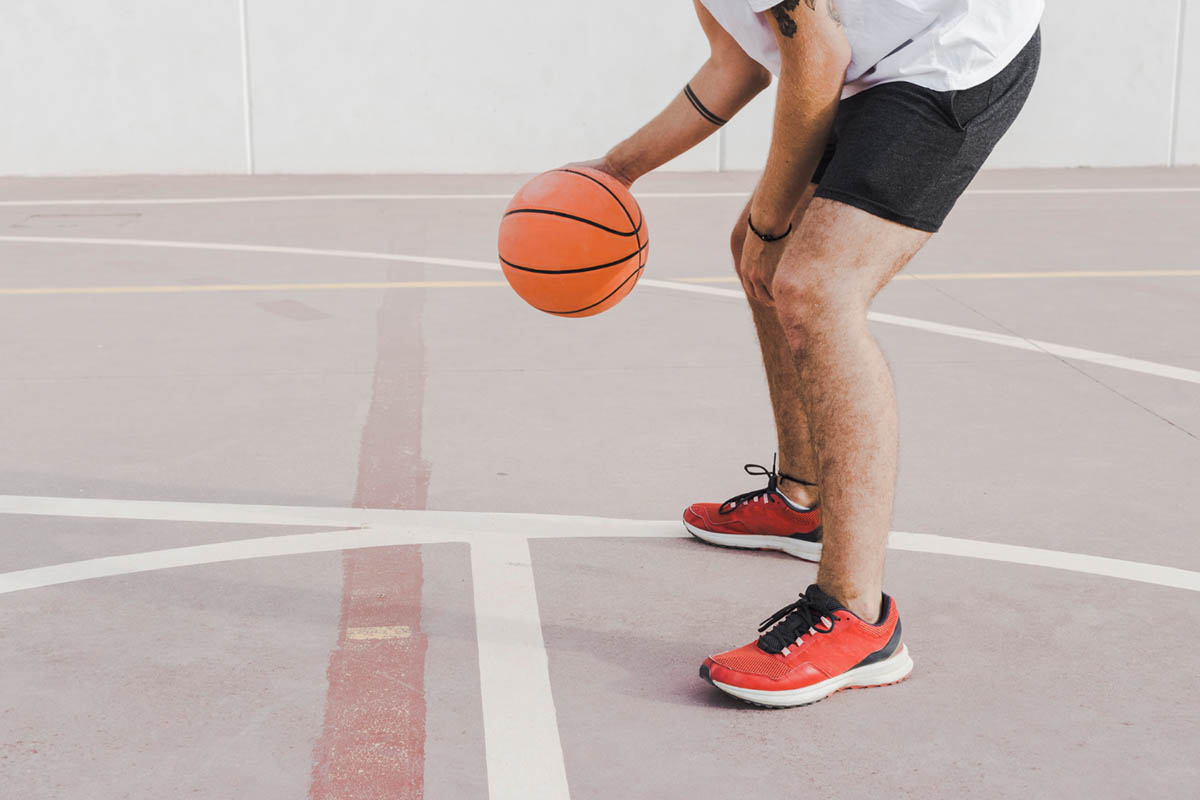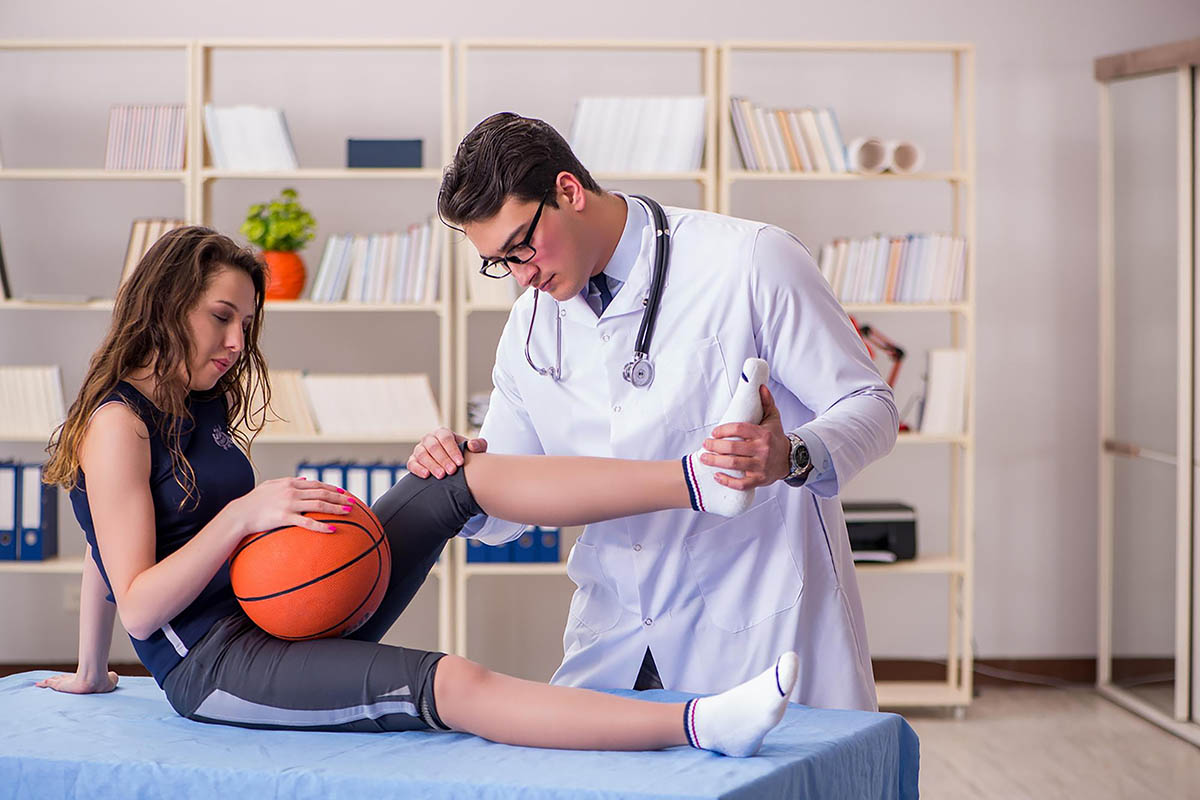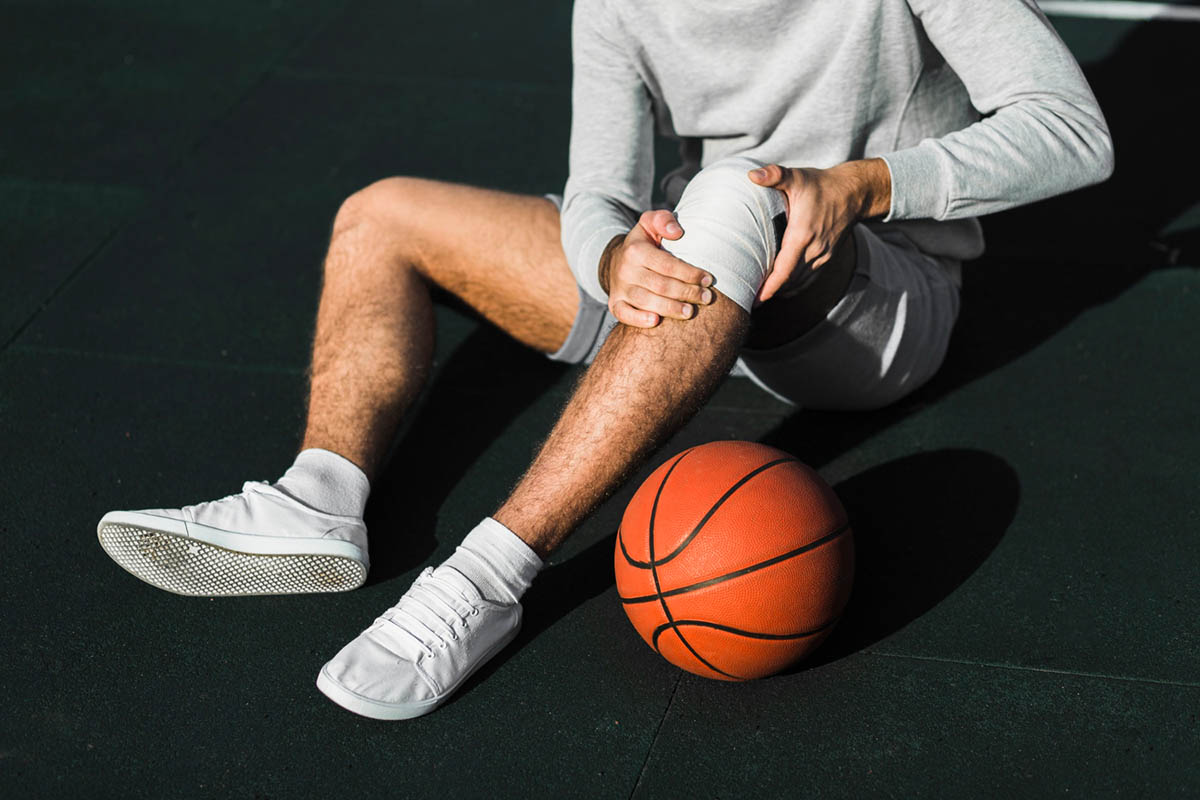Basketball is a demanding sport that requires explosive movements, including jumping, sprinting, and sudden stops. These actions place significant stress on the knees, making knee pain the most frequent complaint of basketball players. Whether it’s occasional discomfort or persistent pain after games, understanding the causes and treatments is essential for staying active, improving performance, and avoiding long-term problems.
Maintaining knee health isn’t just about preventing injuries—improving performance and prolonging your basketball career. This guide explores the common causes of knee pain in basketball, effective treatment options, and the best strategies for prevention.
Common Causes of Basketball Knee Pain
Basketball puts tremendous pressure on the knees, often leading to various injuries and conditions. Knee injuries account for a significant 18.1% of games missed in the NBA, making them a leading cause of lost playing time. Additionally, 44.1% of game-related injuries in basketball involve the knees, highlighting the importance of knee health for maintaining consistent performance. Understanding the specific causes of knee pain from basketball can help players address the issue early and avoid further complications.
Overuse Injuries
Overuse injuries are among the most frequent reasons for knee pain among basketball players. Repetitive jumping, sprinting, and sudden stops place excessive stress on the patellar tendon and surrounding structures. This can lead to patellar tendonitis, also known as “jumper’s knee,” which causes inflammation and pain in the tendon connecting the kneecap to the shinbone. Growth plate damage is another concern for younger athletes, as the constant strain on growing bones can result in long-term issues if not managed properly.
ACL Injuries
Anterior cruciate ligament (ACL) injuries can be severe and can occur during sudden stops and changes in direction—a hallmark of basketball gameplay. Studies show ACL injuries and ankle sprains occur more frequently among players competing at higher levels and during games than during training sessions. The increased intensity and unpredictability of gameplay likely contribute to this heightened injury risk. ACL injuries not only can cause significant pain but also lead to instability in the knee joint, making it difficult to perform basic movements. Recovery often involves surgery and extensive rehabilitation, underscoring the importance of preventive measures such as balance & stability exercises.
Knee Bursitis
Knee bursitis, an inflammation of the bursae (fluid-filled sacs cushion the knee), can develop from repetitive kneeling or direct impact during basketball. This condition causes noticeable swelling and pain, limiting players’ ability to bend or extend the knee. While aspiration or corticosteroid injections can reduce inflammation, long-term management involves reducing pressure on the affected area and strengthening the surrounding muscles.
Meniscus Tears
Meniscus injuries are another common problem for basketball players. These cartilage tears often result from twisting motions or improper landings. Symptoms include pain, swelling, clicking, and a possible sensation of the knee locking. Treatment options range from physical therapy to surgical repairs.
Patellar Tendonitis
Patellar tendonitis, or jumper’s knee, occurs due to repetitive stress on the patellar tendon. The condition causes pain and inflammation below the kneecap and is often exacerbated by poor biomechanics, such as improper landing technique or weak quadricep muscles. Implementing quad-strengthening and hip-strengthening exercises can help alleviate symptoms and prevent recurrence.
How to Treat Basketball Knee Pain

Dealing with knee pain after basketball requires a combination of immediate and long-term strategies. Players can avoid more severe injuries by addressing the pain early and focusing on recovery.
POLICE Method
The POLICE method (Protection, Optimal Loading, Ice, Compression, and Elevation) is a cornerstone of injury management. Resting prevents further damage, while icing reduces inflammation and pain. Optimal loading is critical to facilitate healthy healing to facilitate complete return to function. A compression sleeve can minimize swelling, and elevation improves circulation to promote healing.
Pain Management
Pain management strategies include over-the-counter medications, corticosteroid injections for severe inflammation, and the use of orthopedic specialist services to diagnose and treat underlying issues. Advanced options like tendon repairs may be necessary for chronic or severe injuries.
Physical Therapy
Physical therapy is crucial for treating knee pain from basketball. A professional physical therapy service can provide a personalized recovery plan that includes muscle strengthening, flexibility, and isometric exercises. Physical therapy improves knee stability and reduces pain by targeting the quadricep muscles, hamstrings, and glutes. Additionally, addressing hamstring function is essential, as muscle imbalances can cause increasing strain on the knee joint and disrupting proper biomechanics.
4 Keys to Manage Basketball Knee Pain
Preventing knee pain in basketball requires a proactive approach that focuses on building strength, improving technique, and reducing stress on the knees. Implementing proper training strategies and injury prevention exercises can help players stay pain-free and enhance performance on the court.
Ramp Up Impact Gradually
Sudden training intensity or game frequency increases can overwhelm the knees, causing overuse injuries. Gradually introducing higher-impact activities allows the knee joint to adapt and minimizes the risk of inflammation and pain.
Strengthen the Quads
The quadriceps muscles are integral to knee stability and shock absorption. Quads strengthening exercises like leg presses, wall sits, and lunges help distribute stress more evenly across the knee joint, reducing the likelihood of injuries.
Don’t Forget the Glutes
Strong gluteal muscles are essential for proper biomechanics and knee alignment. Hip strengthening exercises such as glute bridges and side-lying leg lifts improve lower-body stability, taking pressure off the knees.
Try Isometrics
Isometric exercises, such as squatting, build endurance in the knee-supporting muscles without excessive movement. This approach is particularly effective for managing pain during recovery phases.
When to See a Doctor
If knee pain persists despite home remedies, it’s important to consult an orthopedic specialist. Knowing how to treat knee pain from basketball is essential, but some symptoms may require professional attention. Severe swelling, inability to bear weight, or a sensation of instability could indicate conditions such as medial collateral ligament (MCL) injuries, meniscus tears, or patellofemoral pain that need specialized care.
Relieve Basketball Knee Pain & Return to the Court with Austin Manual Therapy

At Austin Manual Therapy, we understand the unique challenges faced by basketball players. Our physical therapy service focuses on tailored treatment plans that address the root causes of knee pain from basketball. Whether you need help recovering from an acute injury or managing chronic discomfort, our team is here to help you return to peak performance.
Conclusion
Knee pain in basketball is a common but manageable issue. By understanding the causes, implementing effective treatment strategies, and prioritizing prevention, players can maintain their performance and enjoy the game for years. Don’t let knee pain from basketball sideline you—seek the right care and stay in the game.
FAQs
Why do basketball players’ knees hurt?
Basketball players’ knees often hurt due to overuse injuries, patellar tendonitis, and the physical demands of the sport, such as jumping and sudden stops. Poor footwear and weak supporting muscles can also contribute to knee pain.
Should I play basketball with a hurt knee?
Playing basketball with a hurt knee is not advisable, as this can worsen the injury. Rest, consult an orthopedic specialist, and follow a recovery plan to prevent long-term damage.
How do you fix knee pain from basketball?
Fixing knee pain from basketball involves a combination of rest, the RICE method, pain management strategies, physical therapy, and targeted exercises like hip and quad strengthening. Severe cases may require specialized treatments, such as tendon or cartilage repairs.





